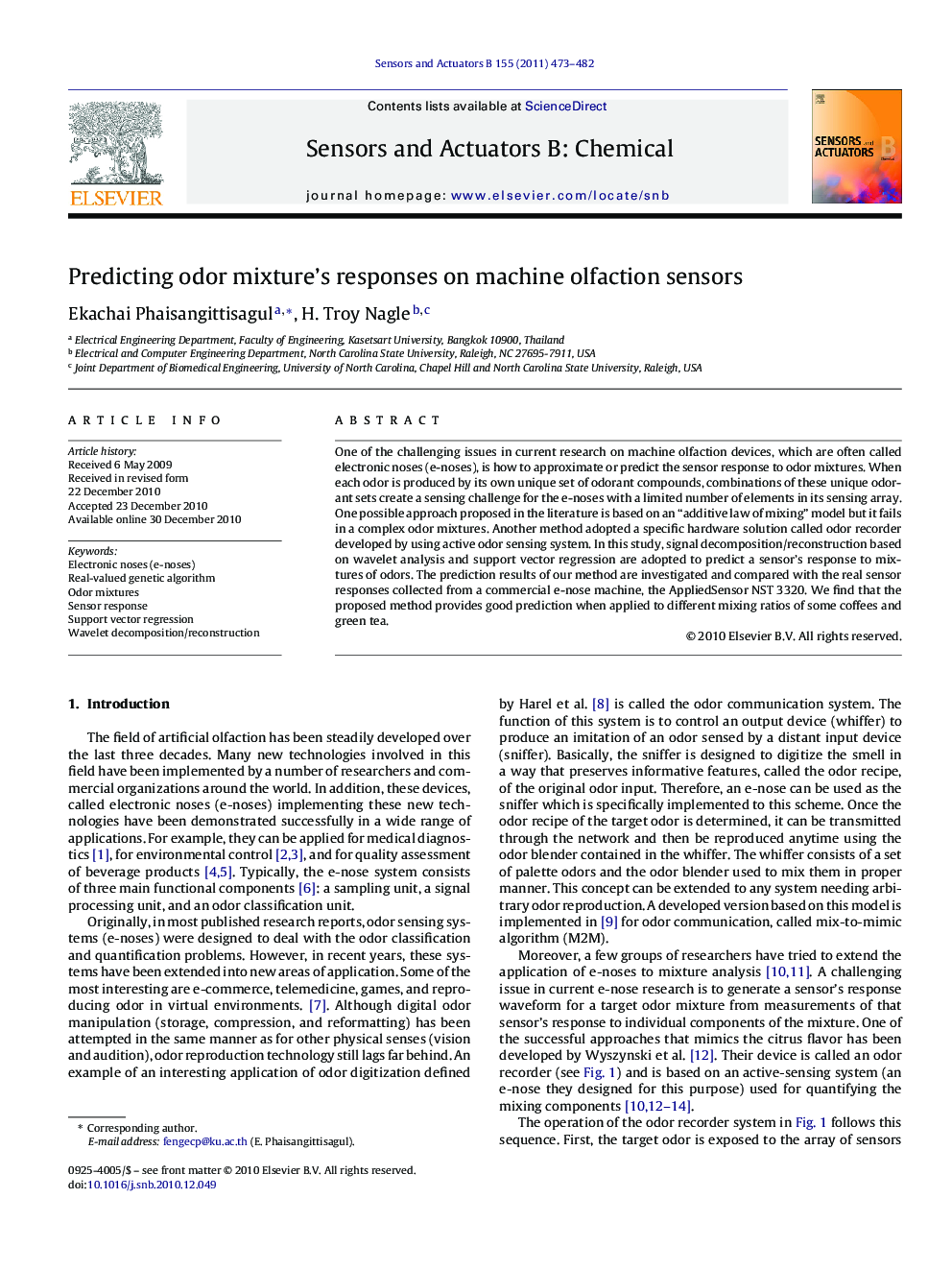| Article ID | Journal | Published Year | Pages | File Type |
|---|---|---|---|---|
| 744100 | Sensors and Actuators B: Chemical | 2011 | 10 Pages |
One of the challenging issues in current research on machine olfaction devices, which are often called electronic noses (e-noses), is how to approximate or predict the sensor response to odor mixtures. When each odor is produced by its own unique set of odorant compounds, combinations of these unique odorant sets create a sensing challenge for the e-noses with a limited number of elements in its sensing array. One possible approach proposed in the literature is based on an “additive law of mixing” model but it fails in a complex odor mixtures. Another method adopted a specific hardware solution called odor recorder developed by using active odor sensing system. In this study, signal decomposition/reconstruction based on wavelet analysis and support vector regression are adopted to predict a sensor's response to mixtures of odors. The prediction results of our method are investigated and compared with the real sensor responses collected from a commercial e-nose machine, the AppliedSensor NST 3320. We find that the proposed method provides good prediction when applied to different mixing ratios of some coffees and green tea.
